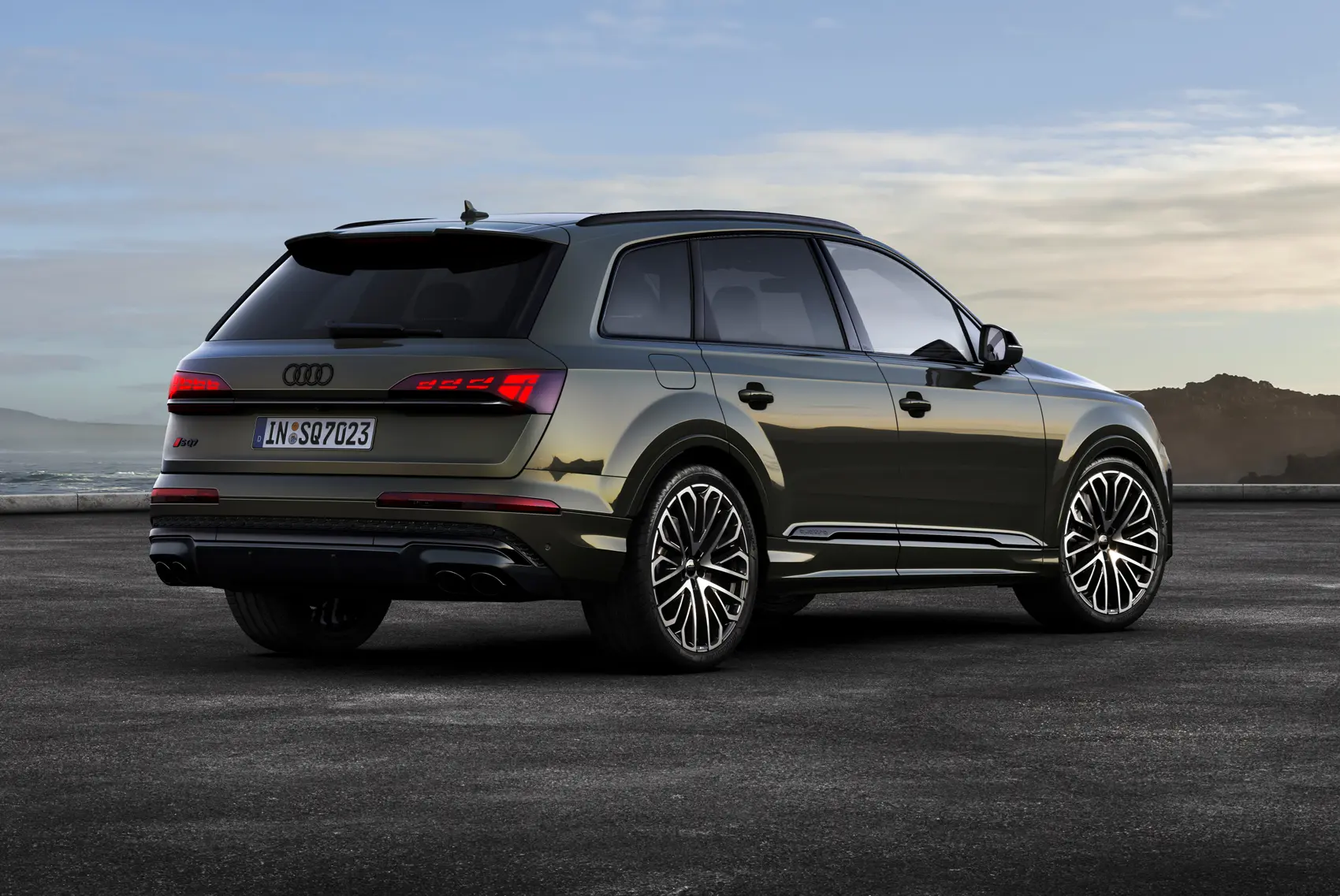When it comes to German engineering, Audi has long held a reputation for delivering a unique blend of performance, luxury, and cutting-edge technology. With its sleek design language, progressive drivetrain architecture, and commitment to innovation, Audi sedans often stand at the intersection of elegance and engineering prowess.
For decades, Audi has carved out a loyal global following, especially among drivers who crave all-wheel-drive stability, refined interiors, and turbocharged performance wrapped in understated sophistication.
But while the brand’s mechanical and aesthetic reputation is largely well-earned, Audi’s journey through automotive evolution hasn’t been without its stumbles, particularly in the realm of electronic reliability.
One of the defining characteristics of many Audi models—especially those from the early 2000s through the 2010s—is the juxtaposition between robust drivetrains and increasingly complex electronic systems.
On one hand, you’ll find models like the B6 A4 and the C7 S6, which offer incredibly resilient engines, solid transmission options, and bulletproof Quattro all-wheel-drive systems.
These cars can routinely cross 150,000 to 200,000 miles with proper care, earning them a loyal following in the used and enthusiast markets. For tuners and daily drivers alike, these sedans represent the best of Audi’s mechanical craftsmanship, proving that the brand can compete with, and even exceed, rivals like BMW and Mercedes in terms of drivetrain durability.
On the other hand, there’s the dark side of this engineering equation: fragile and temperamental electronics that have plagued several otherwise impressive Audi sedans.
From glitchy infotainment systems and unreliable MMI units to failed sensors, parasitic battery drains, and over-complicated driver-assistance features, these electronic failures often overshadow the mechanical reliability of the car.
Models like the C6 A6, D4 A8, and even the popular B8 S4 have earned reputations not for their performance, but for the warning lights that seem to never stay off. These issues aren’t just minor inconveniences—they affect drivability, safety systems, and ownership satisfaction, and are often prohibitively expensive to diagnose and repair.
This article takes a balanced, in-depth look at two sides of the Audi sedan experience. First, we’ll examine five Audi sedans known for having strong, reliable drivetrains—vehicles that deliver mechanical confidence and longevity.
Then, we’ll contrast them with five Audi sedans that, despite their initial appeal and performance, have suffered from fragile and failure-prone electronics. Each model is explored through the lens of real-world reliability, mechanical integrity, and ownership practicality, giving readers a comprehensive guide to what holds up—and what falls apart—when the showroom shine wears off.
Whether you’re an Audi enthusiast, a potential buyer, or simply fascinated by the contrast between innovation and reliability in automotive design, this breakdown aims to inform and prepare.
Understanding both the strengths and the pitfalls of Audi’s engineering choices allows you to navigate the brand’s diverse lineup with clarity—and perhaps avoid some of the headaches that come with luxury ownership.
Also Read: 5 Cars That Rarely See the Mechanic And 5 That Practically Live There
5 Audi Sedans with Strong Drivetrains

1. Audi A4 B6 (2001–2006)
The B6-generation Audi A4 is widely considered one of the more mechanically sound offerings from Audi during the early 2000s. Central to this reliability was the 1.8-liter turbocharged inline-four engine, designated the 1.8T.
This engine, especially in its later iterations with reinforced internals and improved oiling systems, developed a reputation for durability when serviced properly.
Capable of running well past 200,000 miles, it provided a solid foundation for drivers seeking both daily comfort and performance potential. The inclusion of a five- or six-speed manual transmission, particularly when paired with Audi’s Quattro all-wheel-drive system, further amplified the car’s mechanical credibility.
This pairing gave drivers a tactile, predictable driving experience that didn’t deteriorate easily with age or mileage, a rarity among luxury sedans of its time.
Another element that cemented the B6 A4’s reputation for drivetrain strength was the robustness of its Quattro system. Unlike the more electronically controlled setups found in later models, this iteration of Quattro relied more heavily on mechanical engagement, using a Torsen-based center differential to allocate power between the axles.
This provided a balanced torque distribution that enhanced traction in poor weather conditions and offered superior cornering dynamics in spirited driving. More importantly, it meant there were fewer electronic components prone to failure, resulting in a drivetrain that was not only effective but also dependable.
Additionally, the manual transmissions were engineered to handle the torque with minimal issues, offering smooth engagement and long-term durability with proper clutch and fluid maintenance. Owners and enthusiasts frequently praised the B6 A4 for its mechanical simplicity in comparison to newer, more electronically entangled vehicles.
The drivetrain’s straightforward layout meant that diagnosis and repair were often within reach for skilled DIYers, helping the vehicle age gracefully in the hands of attentive owners. Timing belt services, turbo maintenance, and other common repairs could be completed relatively affordably, making long-term ownership more sustainable.
Even the 3.0L V6 version of the B6 A4, while more complex, offered a naturally aspirated alternative that provided smooth and reliable power, especially when coupled with the Tiptronic automatic or Quattro. The B6 A4 is a classic example of Audi’s ability to produce a durable, rewarding drivetrain in an accessible, everyday package.
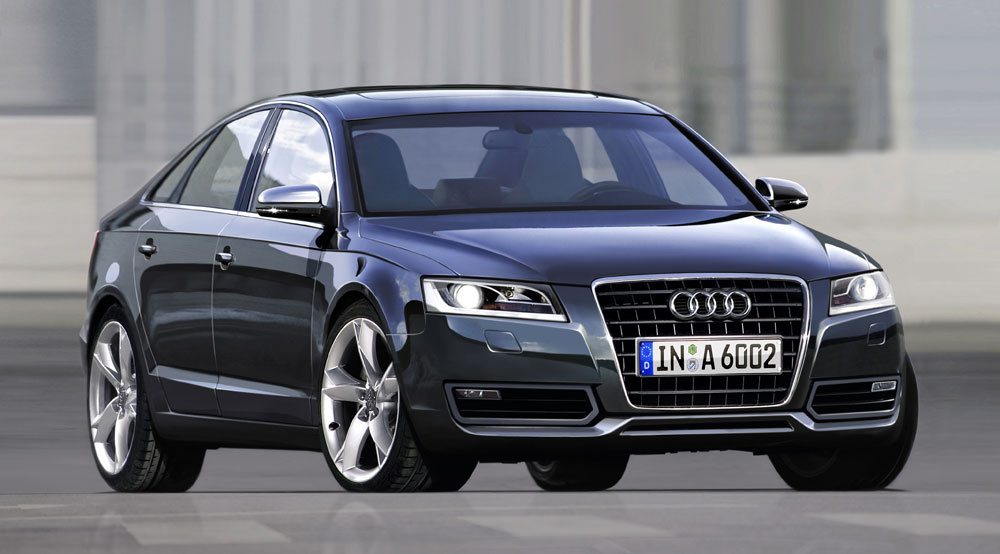
2. Audi A6 C5 2.7T (1997–2004)
The C5-generation Audi A6 with the 2.7T engine is a model that has earned a loyal following among performance enthusiasts and long-term owners alike due to its stout mechanical construction. At the heart of this appreciation lies the 2.7-liter twin-turbocharged V6 engine, originally developed for the B5 S4.
Known for its power potential and ruggedness, the 2.7T was engineered to handle far more power than its stock configuration delivered. Capable of producing upwards of 350–400 horsepower with relatively modest upgrades, this engine became a tuning icon.
Even without aftermarket modifications, it provided strong acceleration, consistent torque across the rev range, and a level of performance that made the A6 feel like a true sports sedan despite its larger body.
The real strength of the drivetrain in the C5 A6 lies in its pairing with either a robust six-speed manual transmission or Audi’s durable five-speed Tiptronic automatic, depending on the trim. The manual variant, though less common, offered direct driver engagement and was well-suited for those looking to harness the full potential of the 2.7T engine.
The Tiptronic automatic, while more comfort-oriented, held up well under normal driving conditions and light modifications. Most impressively, the Quattro all-wheel-drive system in the C5 was mechanically centered and extremely dependable.
It used a Torsen center differential that automatically distributed torque between front and rear axles based on real-time traction conditions, making it an ideal choice for variable weather and road surfaces.
Mechanically, the C5 A6 2.7T benefited from its overengineered nature. Despite the relatively cramped engine bay making maintenance more challenging, the car’s core components—including the engine internals, turbos, driveshafts, and differentials—proved remarkably durable.
It was not uncommon for well-maintained examples to reach 200,000 miles and beyond. Cooling systems, suspension bushings, and turbo hoses were wear items that needed periodic attention, but none of these detracted from the inherent toughness of the drivetrain.
For drivers willing to commit to regular service and occasional upgrades, the C5 A6 with the 2.7T engine remains one of Audi’s most impressive mechanical achievements.
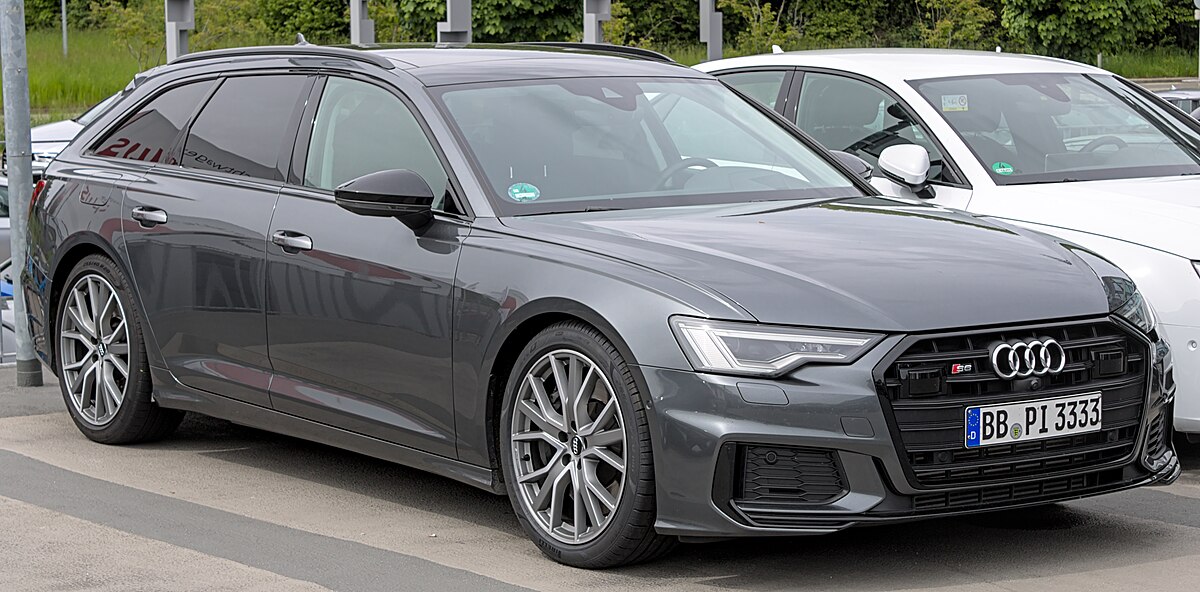
3. Audi S6 C7 (2012–2018)
The C7-generation Audi S6 introduced a new era of performance sedans from Audi, showcasing one of the brand’s most revered engines: the 4.0-liter twin-turbocharged V8.
This engine, developed as part of a joint effort with Bentley and other VW Group brands, delivered a formidable 420 horsepower and 406 lb-ft of torque. The EA824 engine was notable not only for its output but also for its internal strength and longevity.
Featuring a strong iron block, forged internals, and a cleverly designed turbo system with the turbos placed inside the “V” of the engine for reduced lag and improved packaging, the 4.0T offered serious performance without compromising reliability.
When maintained properly with high-quality oil and cooling system service, the engine was known to run reliably past the 150,000-mile mark without major internal failures.
Backing this powerplant was Audi’s proven Quattro all-wheel-drive system and a well-matched seven-speed S-Tronic dual-clutch transmission or an eight-speed torque-converter automatic in later models. Both transmissions were praised for their quick shifts and ability to handle the high torque output of the engine.
The S-Tronic, in particular, offered lightning-fast gear changes and responsive throttle behavior that complemented the S6’s athletic nature.
The drivetrain system was engineered to deliver power seamlessly to all four wheels, with torque vectoring capabilities that allowed the car to corner with surprising agility for its size. The underpinnings, including the differential, driveshafts, and axles, were all built to accommodate spirited driving without early wear or unpredictable failure.
What sets the C7 S6 apart is how well the drivetrain integrates power, precision, and long-term usability. Unlike many modern performance cars that can feel compromised by overcomplicated software or temperamental components, the S6 manages to feel both powerful and predictable.
When left in stock configuration and given consistent service, owners report trouble-free performance even under demanding driving conditions. The engine is relatively tolerant of moderate tuning, and with factory cooling upgrades, it can be pushed even further.
For drivers seeking a luxury sedan with supercar-like performance and proven drivetrain strength, the C7 S6 remains one of the most compelling offerings from Audi in the last decade.
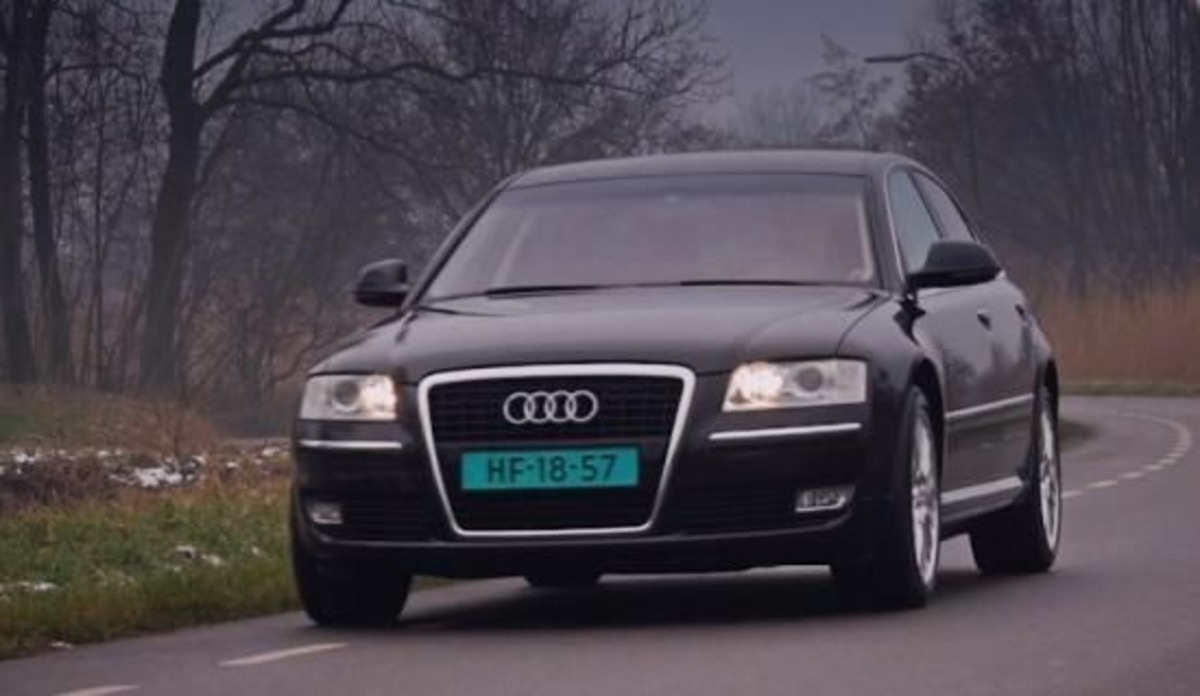
4. Audi A8 D3 (2002–2009)
The D3-generation Audi A8 is often overshadowed by its more technologically advanced successors, but it quietly stands out as one of the most robust and mechanically durable full-size luxury sedans Audi has ever built.
The key to its drivetrain resilience lies in the tried-and-true 4.2-liter naturally aspirated V8 engine, which offered both smooth power delivery and mechanical simplicity.
Producing upwards of 335 horsepower in later trims, this V8 was renowned for its linear power curve and its bulletproof construction. It lacked the forced induction components that could fail in turbocharged models, reducing complexity and potential failure points.
Timing chain setups in the rear of the engine demanded occasional attention, but otherwise, the 4.2 V8 was among the most dependable engines in Audi’s history.
The D3 A8 also benefited from a drivetrain setup that favored long-term stability. The Quattro all-wheel-drive system in this model used a traditional mechanical center differential, ensuring consistent torque distribution without overreliance on electronic intervention.
The six-speed Tiptronic automatic transmission paired with the V8 was smooth, responsive, and rarely suffered from the heat-related issues that plagued some of its rivals.
When serviced with fresh fluid and filters at regular intervals, this transmission showed excellent longevity. The A8’s aluminum space frame also reduced vehicle weight, which helped extend the lifespan of suspension and drivetrain components by reducing the stresses placed on them under load.
Unlike later A8s, which leaned heavily into experimental technologies and electronic ride systems, the D3 version struck a more conservative balance between luxury and engineering restraint. This made it more reliable as a long-term vehicle, with many owners reaching 200,000 miles with little more than routine maintenance.
The mechanical aspects of the car—engine, transmission, and drivetrain—held up remarkably well, especially when compared to the electronics or air suspension components, which were more sensitive. For those seeking an executive-class sedan with true mechanical resilience, the D3 A8 remains a smart, underrated choice in the used luxury market.

5. Audi A4 B8 2.0T (2009–2016)
The B8-generation Audi A4, particularly with the revised 2.0T engine (EA888 Gen 2 and later Gen 3), marked a turning point in Audi’s balance between performance, efficiency, and durability. While earlier turbo-four engines from Audi had issues, particularly with oil consumption and timing chain tensioners, the updated EA888 units were much improved.
Reinforced internals, better piston ring designs, and more advanced engine management systems made the engine both powerful and long-lasting. With 211 horsepower and 258 lb-ft of torque in most trims, the 2.0T delivered a strong mid-range punch and surprisingly good fuel economy.
When maintained with high-quality oil, these engines frequently crossed the 150,000-mile mark with little more than basic service. Audi’s drivetrain layout for the B8 A4 further bolstered its reliability.
The six-speed manual transmission offered in early models and the ZF 8-speed automatic in later ones both had excellent reputations for long-term use. The manuals were simple, effective, and responsive, while the ZF automatics were smooth-shifting and capable of handling well above the engine’s stock output.
These gearboxes, coupled with Audi’s Quattro system—now with refinements in torque distribution and driveline efficiency—provided a sense of stability and control in a variety of road conditions. The mechanical differentials and driveshafts were not known for premature failure, provided they were serviced as recommended.
Perhaps the most understated aspect of the B8 A4’s drivetrain is its balance. The car was light enough to avoid excessive strain on components, yet solid enough to feel planted and confident on the road.
Its relatively straightforward mechanical layout meant fewer surprises during ownership, especially for buyers who steered clear of high-trim models packed with complex features.
For drivers looking for a daily vehicle that could double as a weekend canyon carver or long-distance cruiser, the B8 A4 delivered reliability and mechanical consistency in a stylish, well-built package. It represents one of Audi’s most reliable offerings of the modern era, especially when equipped with the right drivetrain configuration.
5 Audi Sedans with Fragile Electronics
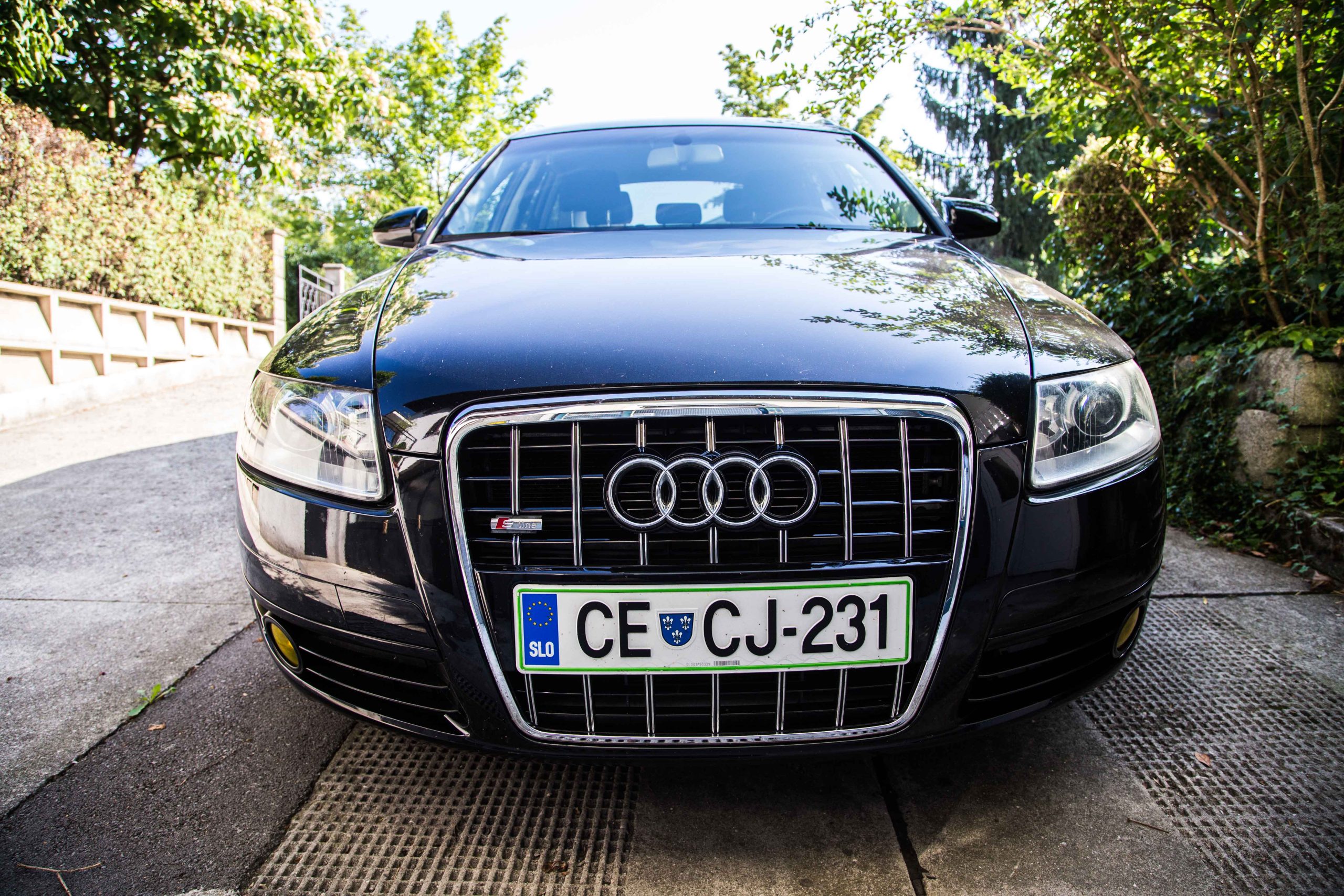
1. Audi A6 C6 (2004–2011)
The C6-generation Audi A6 was a leap forward in terms of luxury and technological innovation, but that advancement came at the expense of reliability—particularly where electronics were concerned.
Central to its technological identity was Audi’s MMI (Multi Media Interface), which controlled almost every comfort and navigation function in the car. Unfortunately, this system proved to be one of the most failure-prone in Audi’s lineup.
Owners routinely reported screen failures, non-responsive controls, and total system reboots, especially in vehicles beyond the warranty period. As the nerve center for climate control, navigation, radio, and Bluetooth, a failing MMI meant that basic functions could become inaccessible, and repairs often involved entire module replacements rather than software patches.
Beyond the MMI, the A6 C6 suffered from poor electronic power management. A notorious issue was parasitic battery drain, with many vehicles losing charge overnight due to control modules that would fail to enter sleep mode. This could be caused by anything from a stuck CD player to an incorrectly coded Bluetooth module.
These problems were difficult to isolate, even with dealer-level diagnostics, and would often return despite attempted fixes. Adding to the complexity was Audi’s move toward a fully integrated network of ECUs, meaning a single faulty module could send ripple effects throughout the vehicle’s electrical system.
Dashboard warnings for unrelated systems like ABS, TPMS, and parking sensors would sometimes light up simultaneously, causing confusion and often leading to unnecessary part replacements in hopes of resolving ghost errors.
Compounding these frustrations were widespread problems with sensors and accessories that required frequent recalibration or failed outright.
Adaptive lighting systems malfunctioned often, leading to warnings and reduced nighttime visibility. The keyless entry and start system would sometimes become unresponsive, requiring expensive fob reprogramming or module replacement.
The electronic parking brake system was also a common source of headaches, with actuators seizing up due to water ingress or sensor failure. These compounding issues turned what was once a premium-feeling car into a minefield of unpredictable faults.
For many owners, especially those beyond factory support, the high repair costs and labor-intensive diagnostics made the C6 A6 more of a burden than a luxury.
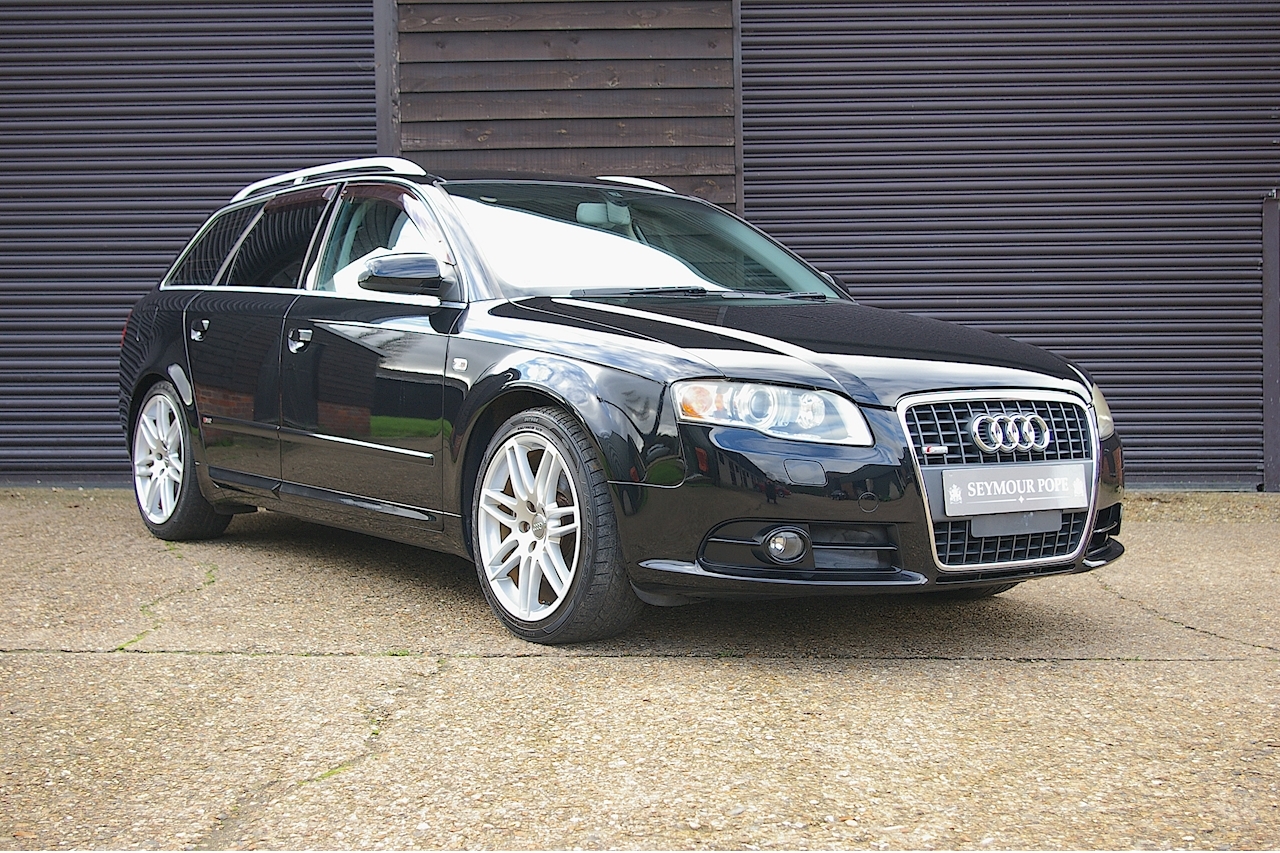
2. Audi A4 B7 (2005–2008)
At first glance, the Audi A4 B7 seemed to build on the mechanical strengths of its predecessor while adding updated styling and modern convenience features. However, the updated electronics platform introduced a wide range of reliability concerns that made long-term ownership frustrating.
The redesigned instrument cluster, though sleeker and more advanced, often suffered from failing LCD pixels and flickering backlights. Many owners found their fuel gauges, temperature readouts, or even warning indicators becoming illegible over time.
This wasn’t just cosmetic—missing warning symbols or alerts could lead to more serious mechanical issues being ignored due to a lack of accurate feedback from the car.
The B7 generation also marked a transitional period for Audi’s electronic control systems, with the introduction of more integrated module communication via the CAN bus network. While this allowed for more sophisticated diagnostics and coordination between systems, it also created vulnerabilities.
A single sensor malfunction, such as a steering angle sensor or throttle body sensor, could cause a cascade of electronic errors that affected unrelated systems.
Electronic throttle control, for instance, was highly sensitive to voltage fluctuations and sensor misreads, leading to EPC (Electronic Power Control) warnings and limp mode activations without any mechanical failure. These unpredictable errors often left drivers stranded or forced into costly trial-and-error repairs.
Additional headaches came from comfort and convenience features that wore poorly over time. Window regulators, door control modules, and mirror adjustment systems were all electronically controlled and known for short service lives.
Audi’s initial use of fiber optic cables for audio and navigation systems also proved to be a liability; slight damage or moisture ingress could completely disrupt functionality.
This meant that a minor water leak into the trunk or floorboard—common in older B7s—could disable the entire stereo or navigation system. While the B7 was a strong performer from a mechanical standpoint, its fragile and interconnected electronics made it an aging luxury vehicle that demanded both patience and a well-funded maintenance budget.
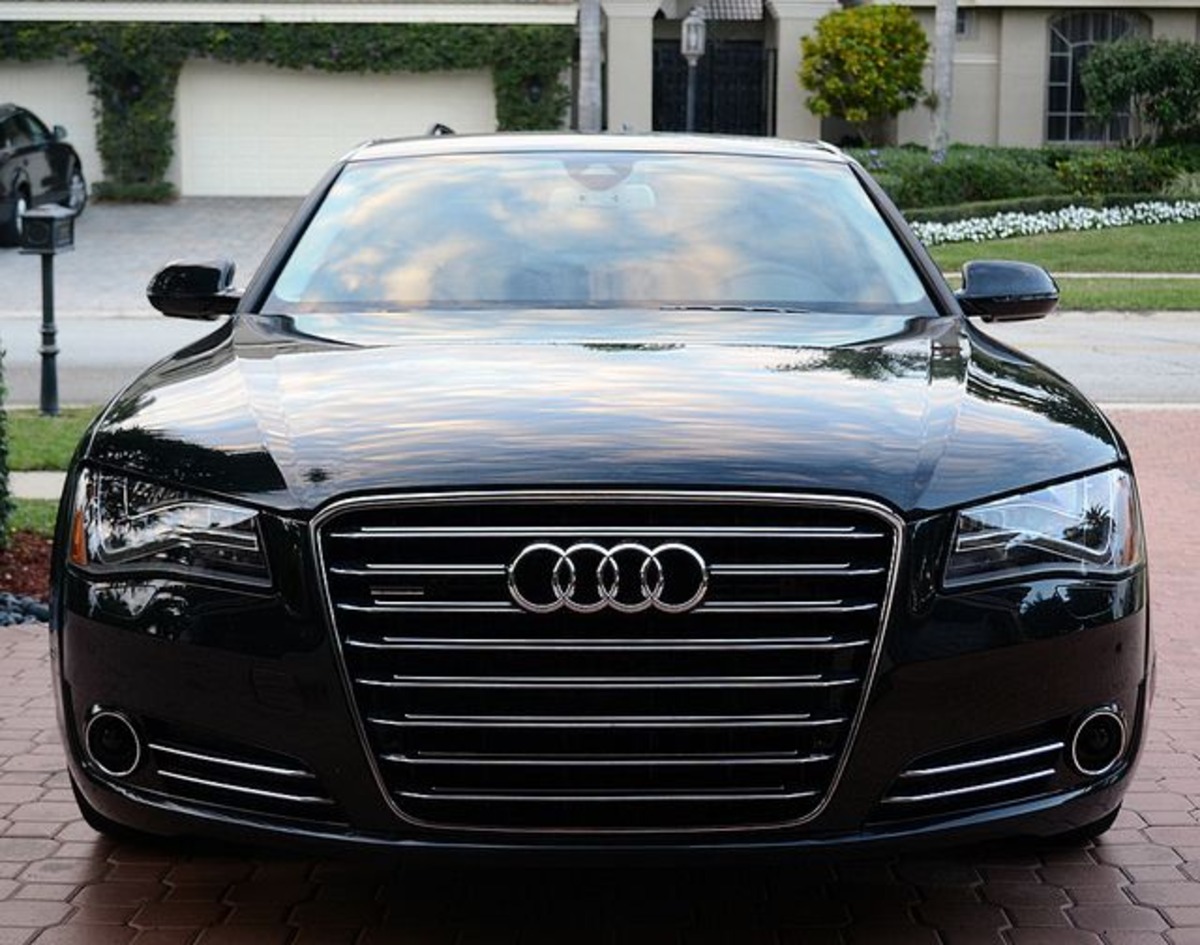
3. Audi A8 D4 (2010–2017)
As Audi’s flagship luxury sedan, the D4-generation A8 was intended to showcase the very best the brand had to offer in terms of design, comfort, and technology. It succeeded in delivering a cutting-edge luxury experience, with features like full LED matrix headlights, adaptive cruise control, night vision assist, and a completely digital gauge cluster.
Unfortunately, these features were also the source of many of the car’s most debilitating reliability issues. The MMI Touch interface and retractable infotainment screen frequently failed after extended use. Some units became unresponsive, while others refused to rise from the dashboard at all—effectively locking users out of basic vehicle functions like navigation and radio.
The D4 A8’s air suspension system, while offering a sublime ride quality when functioning properly, relied heavily on electronic sensors and ride height control modules that were prone to failure. The air compressors would often work overtime to compensate for minor leaks or incorrect sensor readings, eventually burning out and requiring costly replacement.
When these systems failed, the vehicle could sag unevenly or ride harshly, transforming it from a luxury cruiser into a barely drivable machine. These issues often went hand in hand with persistent error messages related to ride height calibration or suspension faults—warnings that were difficult to ignore, both visually and functionally, as they disabled certain drive modes and handling features.
Even more troubling were the failures in the advanced driver-assistance features. The radar sensors used for adaptive cruise control and lane-keeping assist could become misaligned or fail outright due to minor impacts or sensor contamination. The night vision system, while impressive in concept, rarely functioned without glitches after a few years of ownership.
Moreover, the A8’s keyless entry and push-button start system suffered from inconsistent recognition of the key fob, leaving drivers locked out or unable to start the car.
For many D4 A8 owners, what began as an experience of cutting-edge luxury devolved into a never-ending cycle of sensor failures, software glitches, and high repair bills, especially as the vehicle aged beyond its factory warranty coverage.
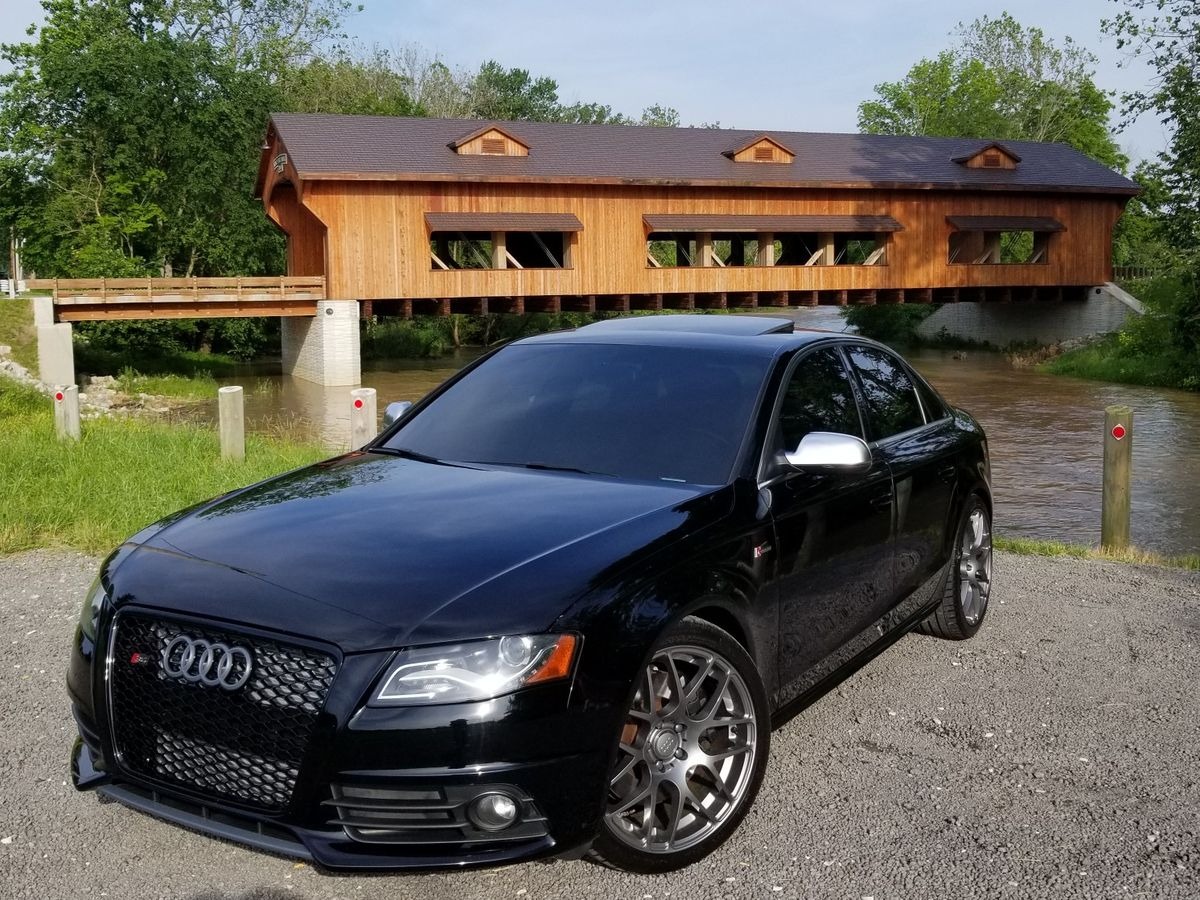
4. Audi S4 B8 (2009–2016)
The B8 S4 is highly regarded for its supercharged V6 engine and engaging driving dynamics, but it also introduced a complex electronic environment that made it less dependable as the years went on. One of the most prominent pain points was the MMI 3G+ infotainment system, which was responsible for managing everything from audio to vehicle settings.
This system, while initially responsive and intuitive, became prone to slow boot times, system crashes, and unresponsive controls. Hard drive failures within the MMI system rendered navigation unusable and, in some cases, disabled the rear camera and parking sensors due to the shared module architecture.
The B8 S4 also struggled with its CAN-based network of modules that governed everything from throttle input to interior lighting. This integration made the system efficient when it worked correctly but highly susceptible to cascading failures. One failing sensor or corrupt signal could knock out multiple subsystems.
A failed wheel speed sensor, for example, might simultaneously affect the ABS, stability control, and adaptive cruise systems. Electrical grounding issues within the chassis could lead to erratic warning lights or module communication errors, which were notoriously hard to diagnose even with Audi’s proprietary VCDS diagnostic tools.
As these vehicles aged, many owners faced intermittent electrical problems that were almost impossible to trace without complete module replacements. Another area of weakness was the electronic control of the S4’s performance features.
The electronic steering rack, though precise and responsive, occasionally failed due to control module issues, resulting in heavy or inconsistent steering effort. The rear sport differential, a key handling advantage of the S4, also relied on its dedicated control unit, which could suffer from fluid leaks or electronic errors that disabled its torque-vectoring capabilities.
In cold climates, moisture ingress into connectors was a known issue, affecting everything from the headlights to the power windows. As a result, many owners found themselves spending more time and money on diagnostics and module swaps than on the expected high-performance upgrades.
Despite being mechanically strong, the B8 S4’s fragile electronics dulled what could have been a nearly perfect driving experience.

5. Audi A3 Sedan (8V, 2013–2020)
The Audi A3 8V sedan was marketed as an accessible entry point into the brand’s luxury offerings, combining sharp styling with a more compact, urban-friendly footprint.
However, this generation also marked Audi’s effort to bring high-end technology to a lower price point—an ambition that frequently backfired due to subpar component quality and early system failures.
The MIB infotainment system, a scaled-down version of Audi’s higher-end MMI, was a consistent source of frustration. Many owners encountered screen freezes, distorted audio playback, failed Bluetooth connections, and issues with the retractable display mechanism.
Updates were infrequent and often made issues worse, rather than resolving them, leaving owners with nonfunctional systems for months at a time.
The A3 also introduced greater reliance on electronically controlled accessories, including the electronic parking brake, rain-sensing wipers, and automatic headlights. Unfortunately, many of these systems were plagued with calibration issues and sensor faults.
The start/stop system—a key feature for improving fuel economy—frequently failed due to low battery voltage, faulty sensors, or ECU miscommunication.
Additionally, early production models suffered from fuel pump module failures linked to bad software, which not only triggered warning lights but could also cause stalling under certain driving conditions. These faults led to several service campaigns and recalls, reflecting the underlying fragility of the car’s electrical infrastructure.
In higher trims, the A3 came equipped with features like adaptive cruise control, lane assist, and parking assist—systems that were rarely seen functioning flawlessly beyond the first few years of ownership. Moisture ingress, connector degradation, and software corruption rendered many of these systems unreliable or completely inoperative.
Even something as simple as a malfunctioning rearview camera often required replacing not just the camera itself but the associated control module, at a cost far out of proportion with the car’s market value.
As a result, while the A3 sedan offered an attractive package on paper, its long-term ownership experience was marred by a steady accumulation of electronic problems that significantly undermined its perceived value and reliability.
Also Read: 5 Cars That Rarely See the Mechanic And 5 That Practically Live There
Audi sedans occupy a unique and often paradoxical space in the automotive world. They are admired for their forward-thinking design, advanced drivetrains, and a level of refinement that blends sport and luxury in equal measure. Models like the B6 A4 and C5 A6 2.7T prove that when Audi gets it right, the result is a vehicle that not only performs well but also holds up admirably over time.
These sedans offer a confidence-inspiring mechanical experience—durable engines, reliable transmissions, and a Quattro all-wheel-drive system that has become legendary in its own right. For buyers seeking value in the used luxury car market, these models often represent the best of both worlds: European performance and dependable engineering.
However, Audi’s ambition has also led it to experiment—sometimes prematurely—with complex electronic integrations that haven’t aged as gracefully.
The allure of high-tech features, from adaptive cruise control to advanced infotainment systems, often becomes a liability as vehicles move past their factory warranty periods. The C6 A6 and D4 A8 are cautionary tales in this regard.
While these sedans offer exceptional driving comfort and an array of luxury appointments, they are just as likely to frustrate owners with persistent warning lights, failing sensors, and expensive module replacements.
Even simple problems, like malfunctioning rearview cameras or climate control glitches, can require multi-hour dealer diagnostics and parts that cost more than major mechanical components.
This contrast underscores an important lesson in automotive design: complexity without durability leads to a compromised ownership experience. While many Audi engines and drivetrains are built to last, the overdependence on electronics in several models has created a situation where the body outlasts the brain.
For enthusiasts, this can be manageable—there’s a sizable community dedicated to diagnosing, modifying, and repairing Audi electronics. But for the average driver, especially those who rely on their car as a no-nonsense daily commuter, these issues can quickly turn a luxury vehicle into a financial burden.
That’s not to say that Audi should avoid innovation. On the contrary, their leadership in safety features, infotainment integration, and all-weather performance has pushed the entire industry forward.
But with each leap in technology comes a responsibility to ensure long-term reliability, especially as luxury vehicles age and move into the hands of second and third owners.
Brands like Lexus and Volvo have managed to strike that balance, delivering high-tech vehicles that also perform reliably well into their second decade. Audi, to its credit, is improving in this area, but the past remains instructive.
In the end, the ideal Audi sedan combines the brand’s hallmark driving experience with thoughtful, reliable technology. For prospective buyers and enthusiasts alike, knowing which models offer robust mechanical value—and which ones carry the risk of electrical headaches—is the key to making a smart, satisfying purchase.
By learning from the past and appreciating both the triumphs and flaws of these vehicles, owners can enjoy the very best Audi has to offer, without being blindsided by the pitfalls of its more fragile innovations.

